
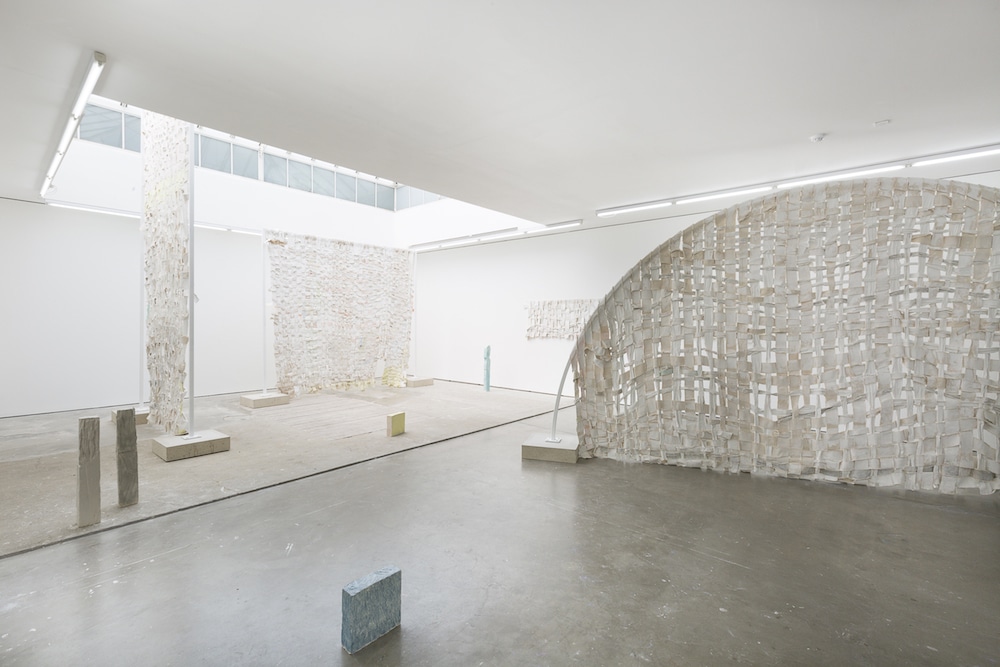
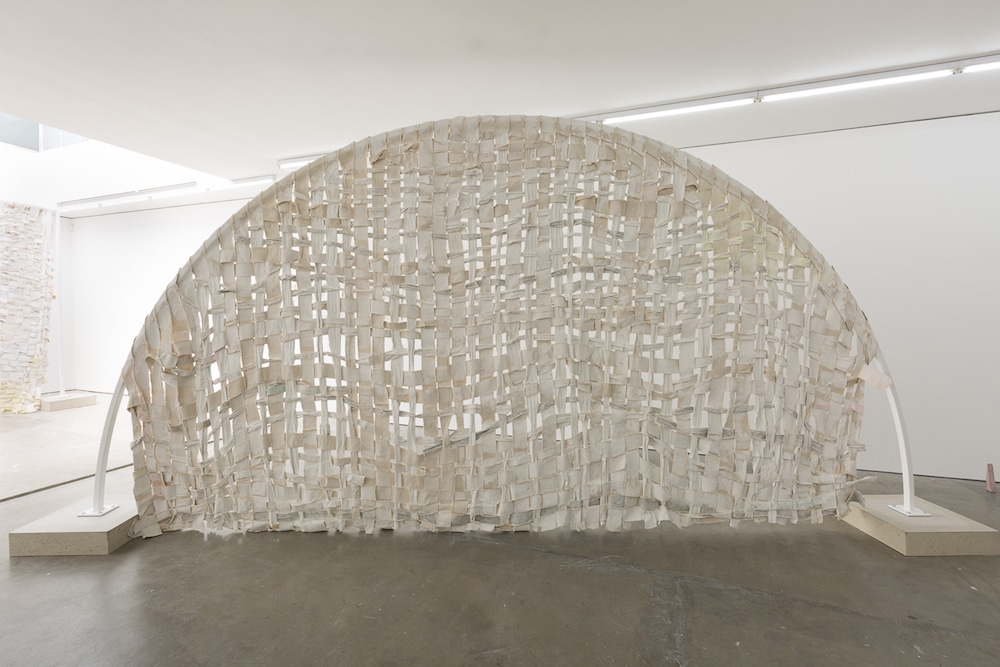
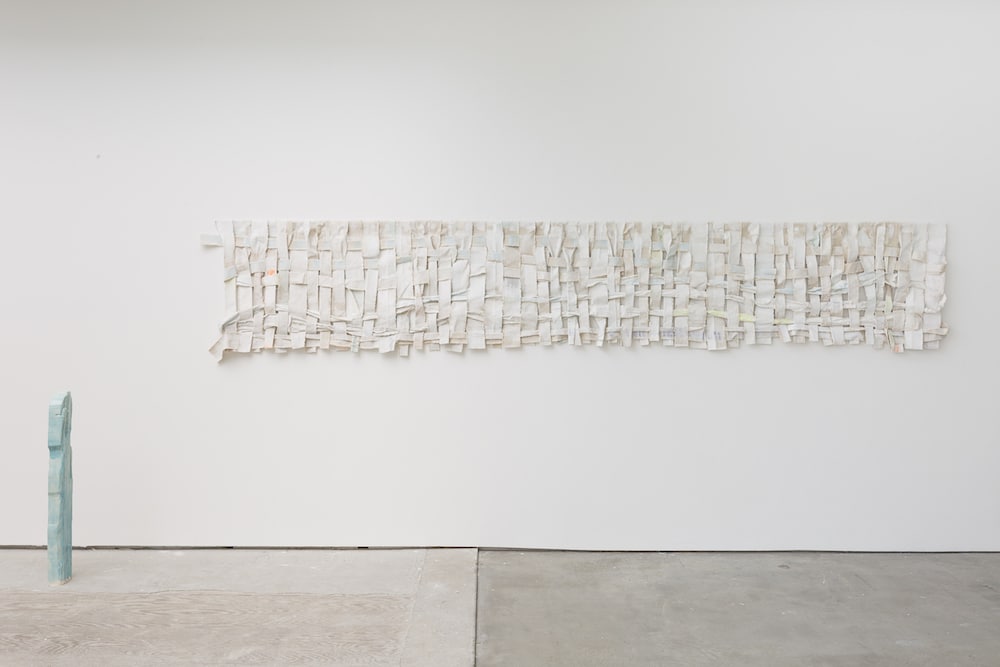
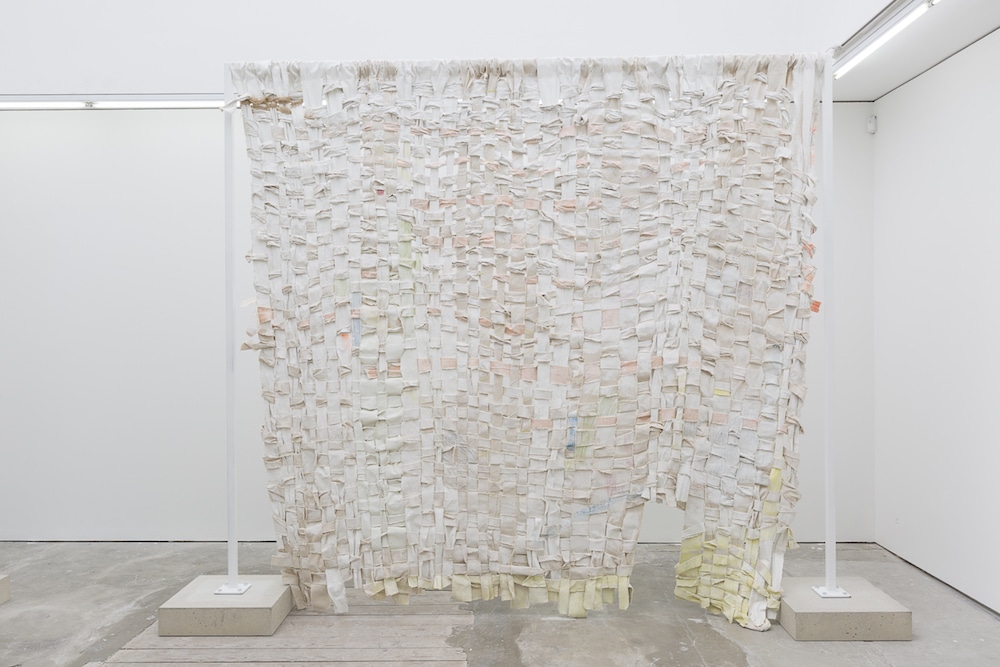
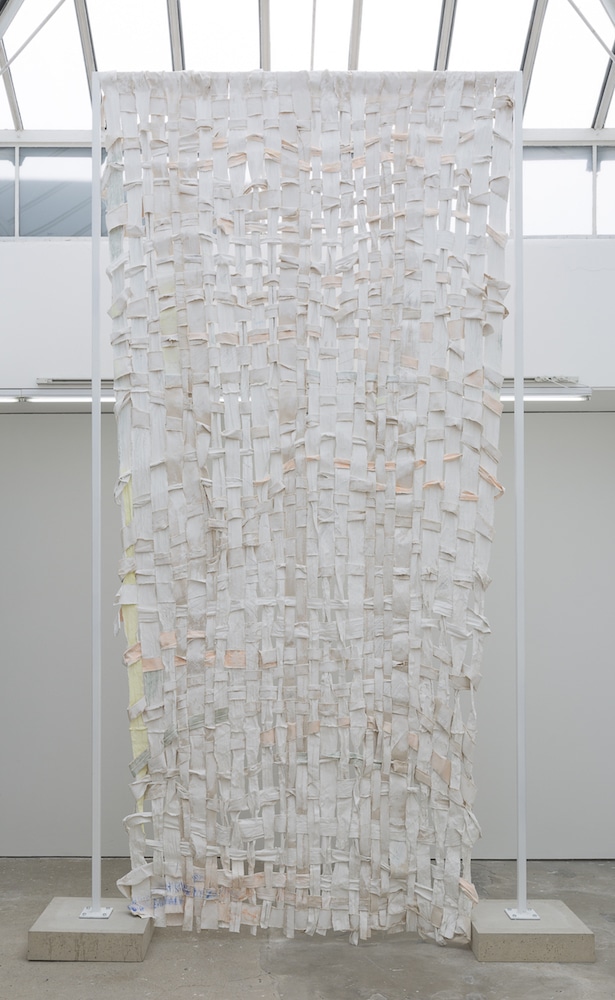
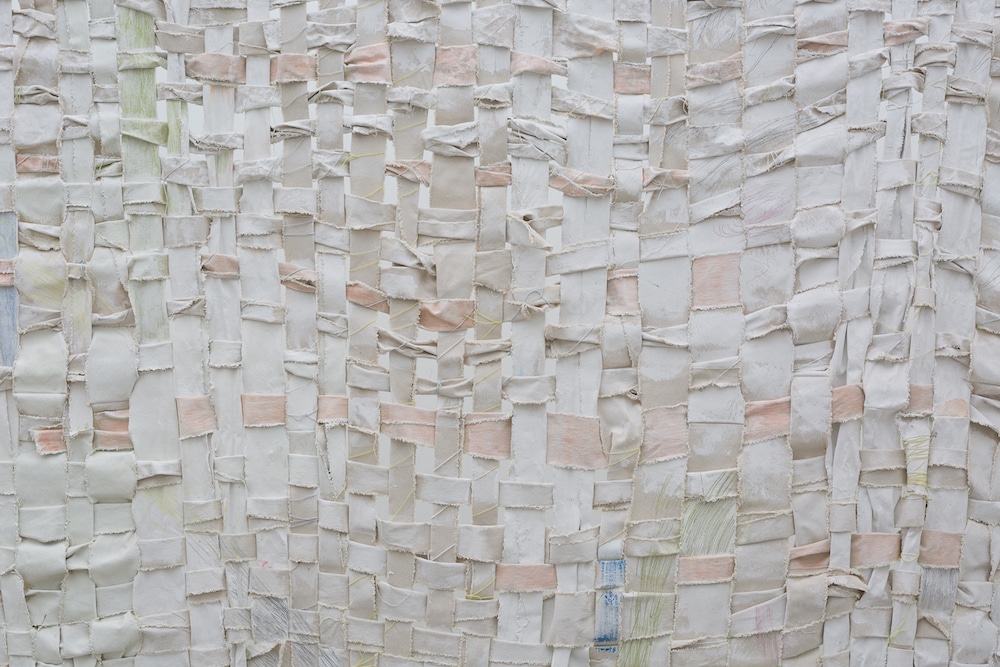
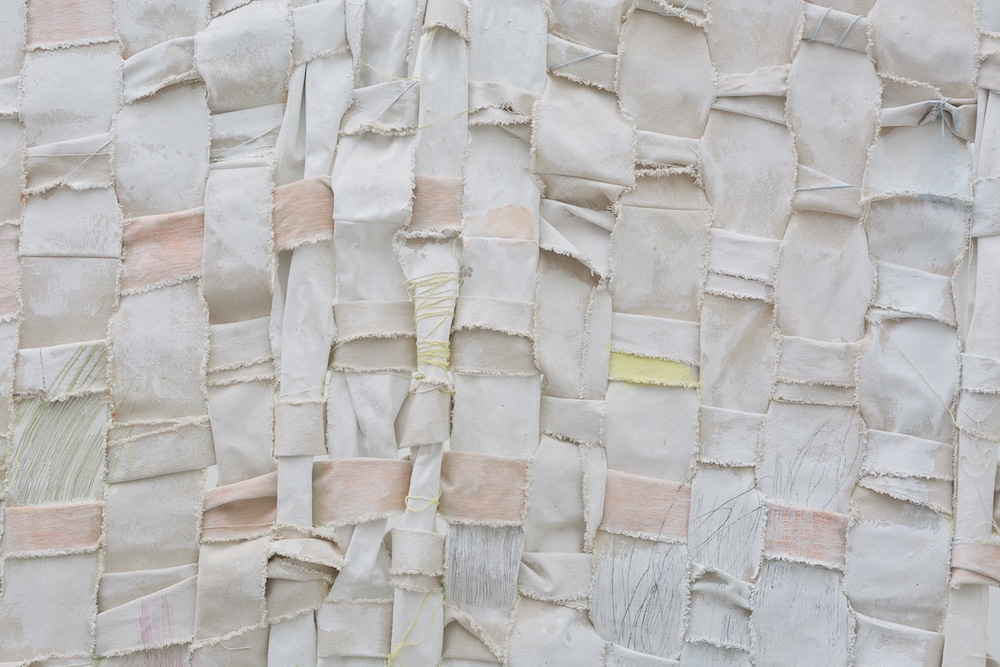
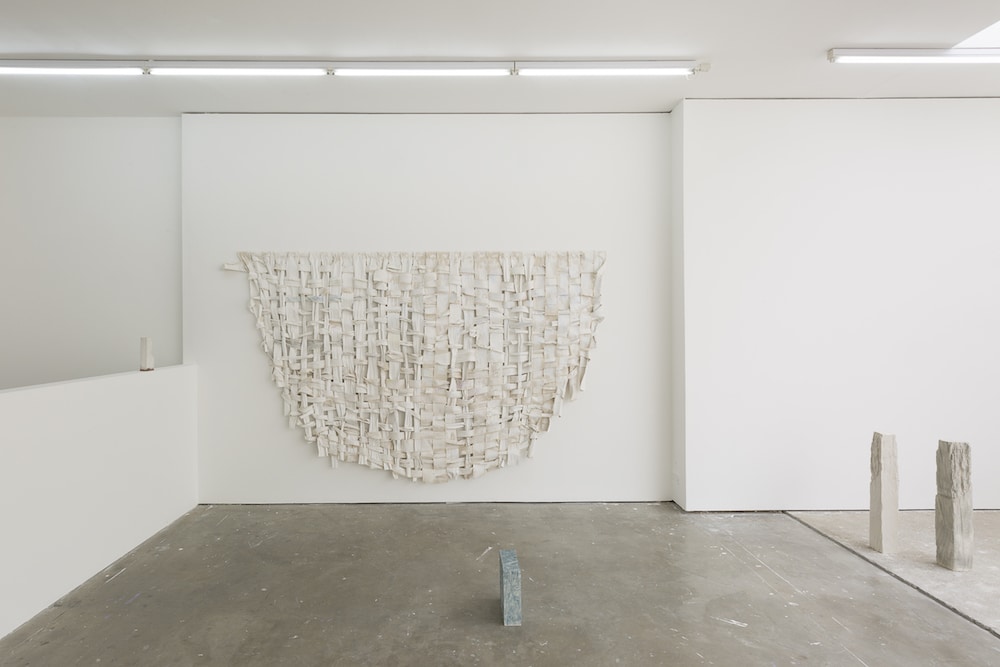
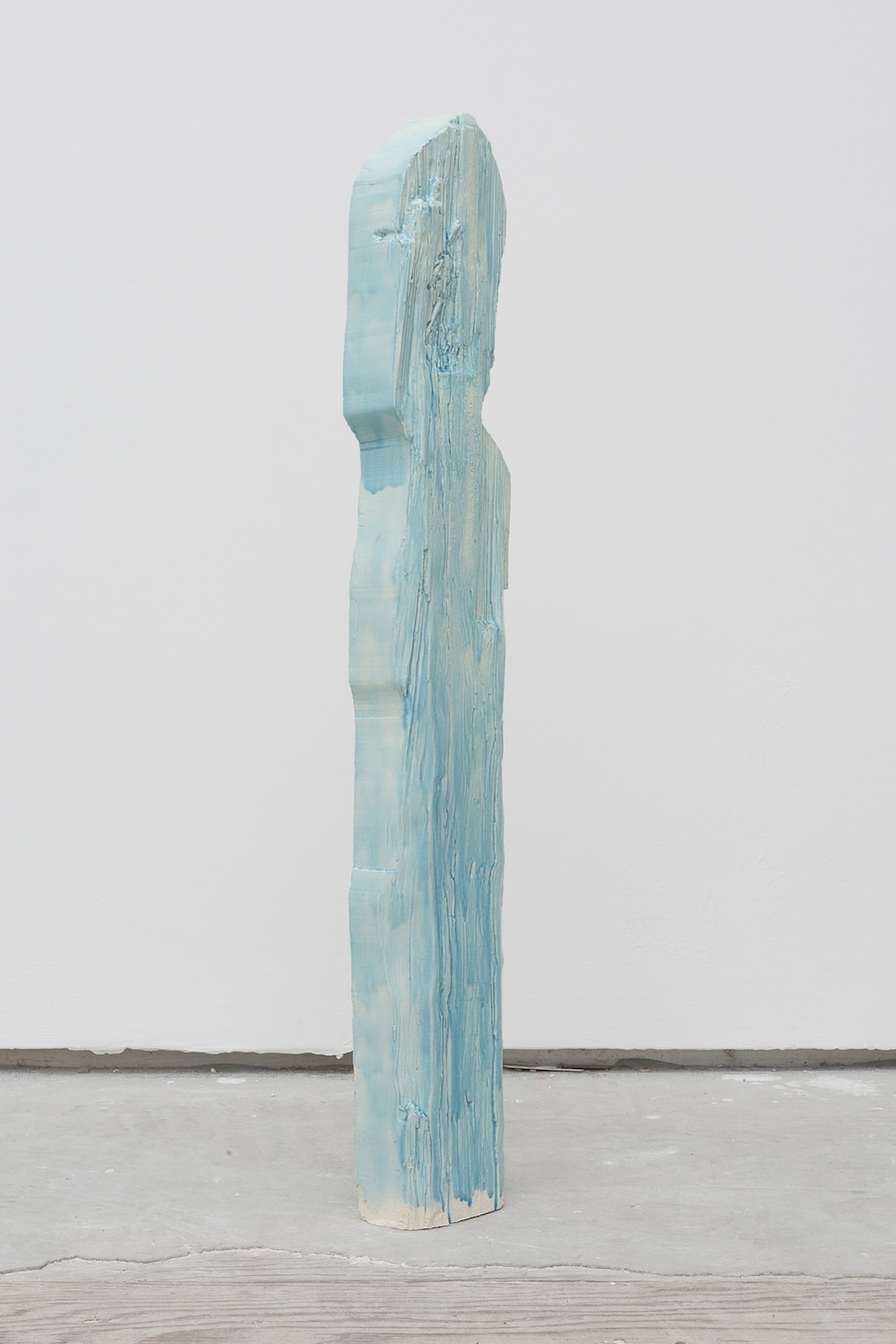
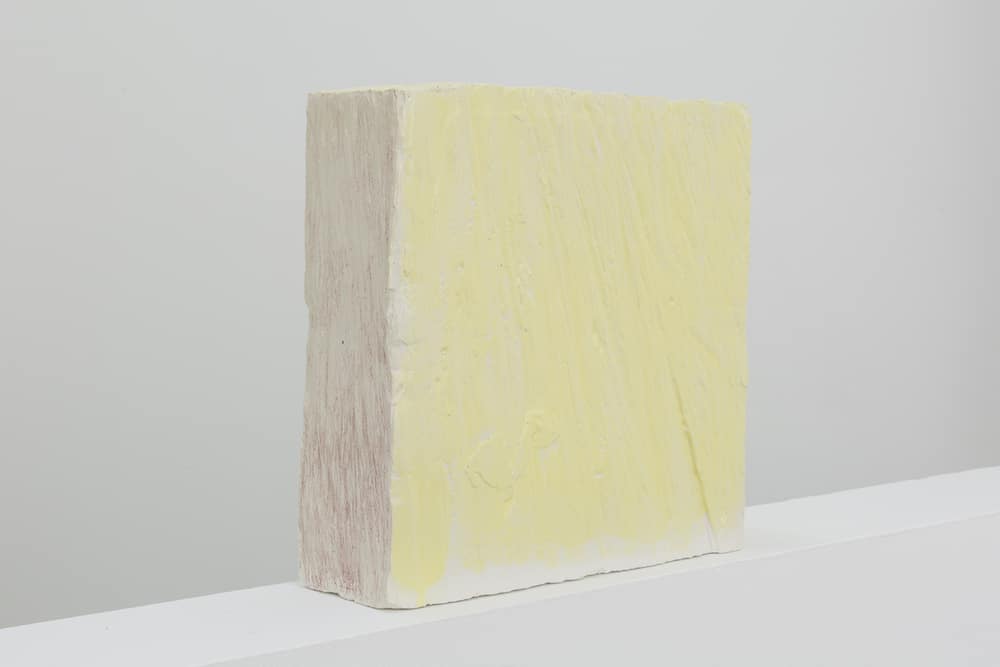
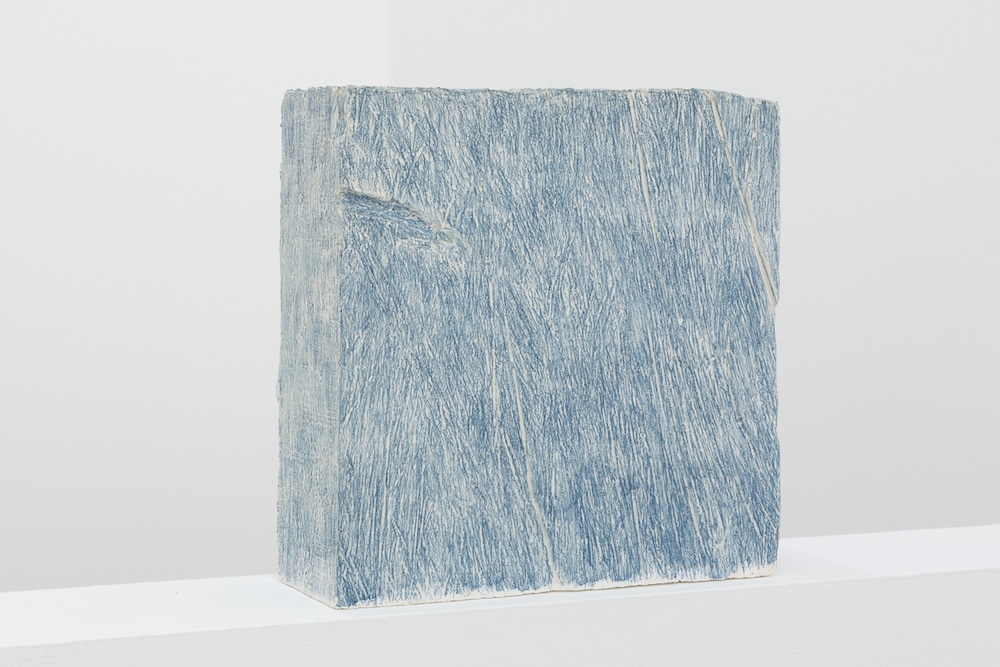
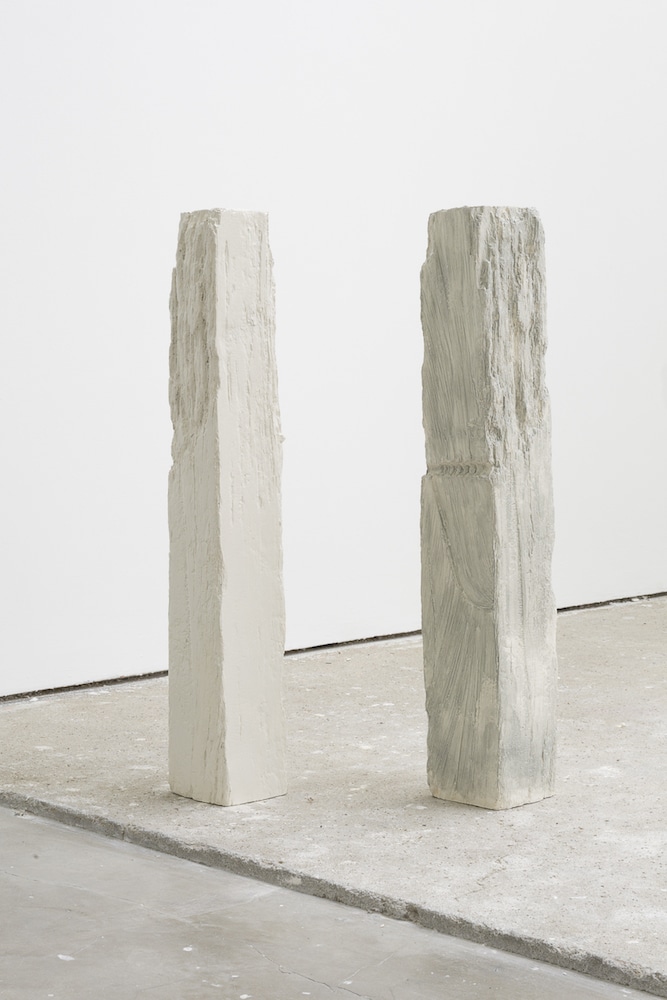
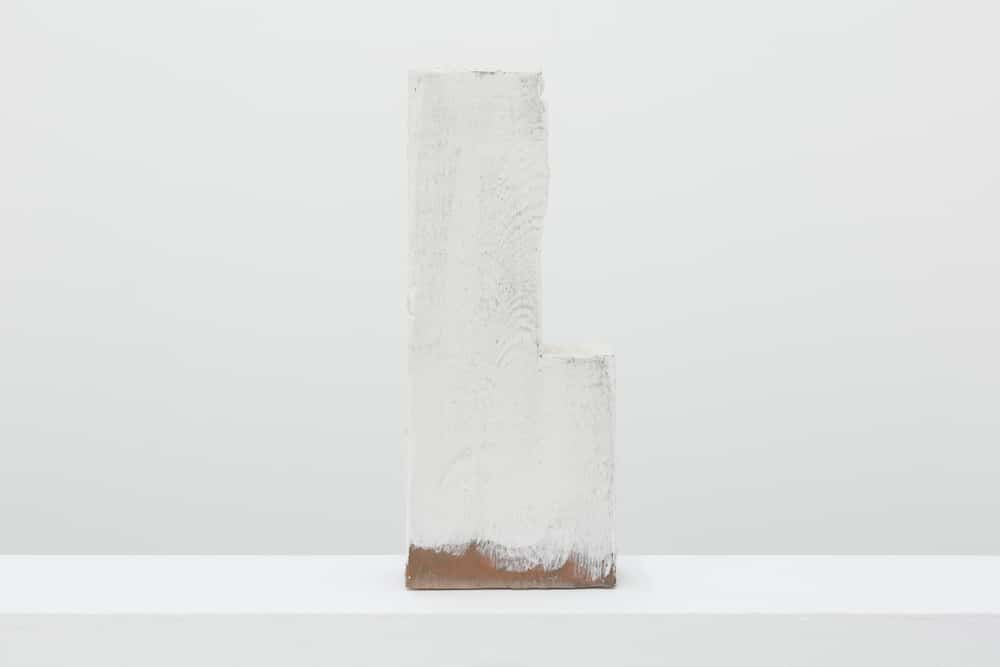
Edel Assanti
London 2019
Over the past decade, Jodie Carey has explored the universal human urge to make an impression on our surroundings. Through site-responsive sculptural installations, Carey’s practice adopts culturally universal, age-old artistic methods of creation, often evoking ritualistic or primitive traditions. Through revisiting these techniques, her oeuvre emphasises the relationship between object making and commemoration, whilst also looking to the physical world as a repository of material memory, silently registering the passage of time.
Carey’s fourth solo exhibition at Edel Assanti centres around a series of monumental woven canvases, suspended in the air on steel armatures as freestanding structures. Made from roughly woven strips of canvas that have been dipped in paint and woven whilst wet, their surfaces are then worked and reworked with paint, colouring pencil, and thread. Carey’s process imbues an aesthetic revealing wear and tear, evidencing time, as well as mental and physical labour. Despite bearing no discernible narrative, in medium and appearance they recall folk-traditions of recording collective histories through tapestries and quilt making.
The monumentality of the installation subverts the cloth’s ephemeral, domestic connotation. Standing as objects in space, the fabric sculptures have a strong physical presence, reaching the heights of the gallery; yet the loose, open weave allows light to pass through. Escaping the formal rigidity of woven structures, instead the works possess a rhythmical fluidity and raw simplicity, tapping into a sculptural vocabulary traditionally the preserve of heavy materials.
A number of floor-standing ceramic sculptures punctuate the space, infused with accents of colour mirroring the energetic impressions on the surfaces of the canvases. These works were cast from 100-year-old timbers that have been reused repeatedly in the artist’s practice. Their long history is etched into their weathered surfaces in a patina of cuts and marks that is captured in the cast ceramic sculptures, giving them a sense of objecthood. These small totemic works at once testify to humble origins, whilst also possessing an archaeological beauty.